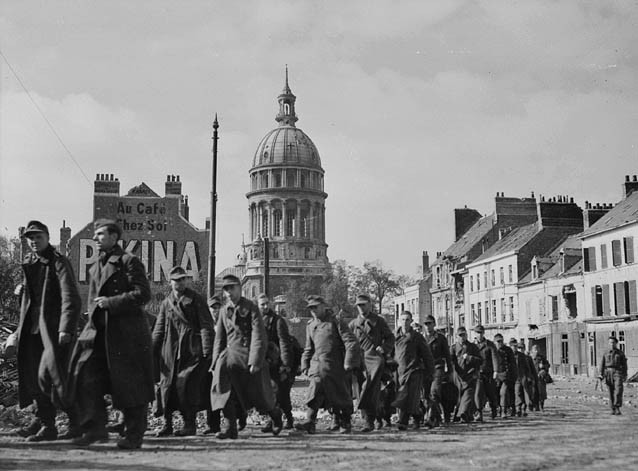The plan for the Canadian forces to capture Boulogne-sur-Mer meant that, due to the geography of the landscape, the Canadian forces needed to secure the high ground that overlooked the town and port. This was done to allow the main attack on the town to be launched on 18 September 1944. The town was therefore surrounded prior to the main advance.
To the north, the North Shore Regiment advanced in a north to south direction and liberated Wimereux. To the south, the North Nova Scotia Highlanders moved from the high ground at St Etienne and then northwards towards Equihen-Plage. This approach was effectively a pincer movement. From the east, the Régiment de la Chaudière, Queens Own Rifles of Canada, Stormont, Dundas & Glengarry Highlanders and Highland Light Infantry of Canada moved forwarded. All four regiments advanced in a west direction through the German defences, encountering differing amounts of resistance.
The North Nova Scotia (NNS) advancing from Equihen-Plage noted that the fortifications were taken one by one as the Canadian forces advanced onto them. On 21 September at 13:00, the NNS had reached the German radar station, Stutzpunkt 262. They were informed by the commander that the German garrison there wanted to surrender. With the four main regiments clearing German positions in the town and then the port area, on 22 September, German General Ferdinand Heim communicated with the Canadian forces. The order for those remaining German forces to surrender was issued by the commander and the town was liberated.
Prior to that, as the Canadian forces advanced towards the port area and the forts, reports of large explosions were heard. In some cases, the German forces were demolishing the infrastructure to deny it to the Allies. In a short period of time, many residents of Boulogne returned to the town. The Canadian civil aid units were present and provided food, water and offered medical aid to anyone who required it.
Repair work by the Port Repair and Construction Group commenced soon after the liberation. On 10 October 1944 an oil pipeline was laid from Dungeness, England, to Boulogne. This was part of Operation Pluto to supply the Allies with oil and petrol. On 14 October the port was reopened to shipping.
